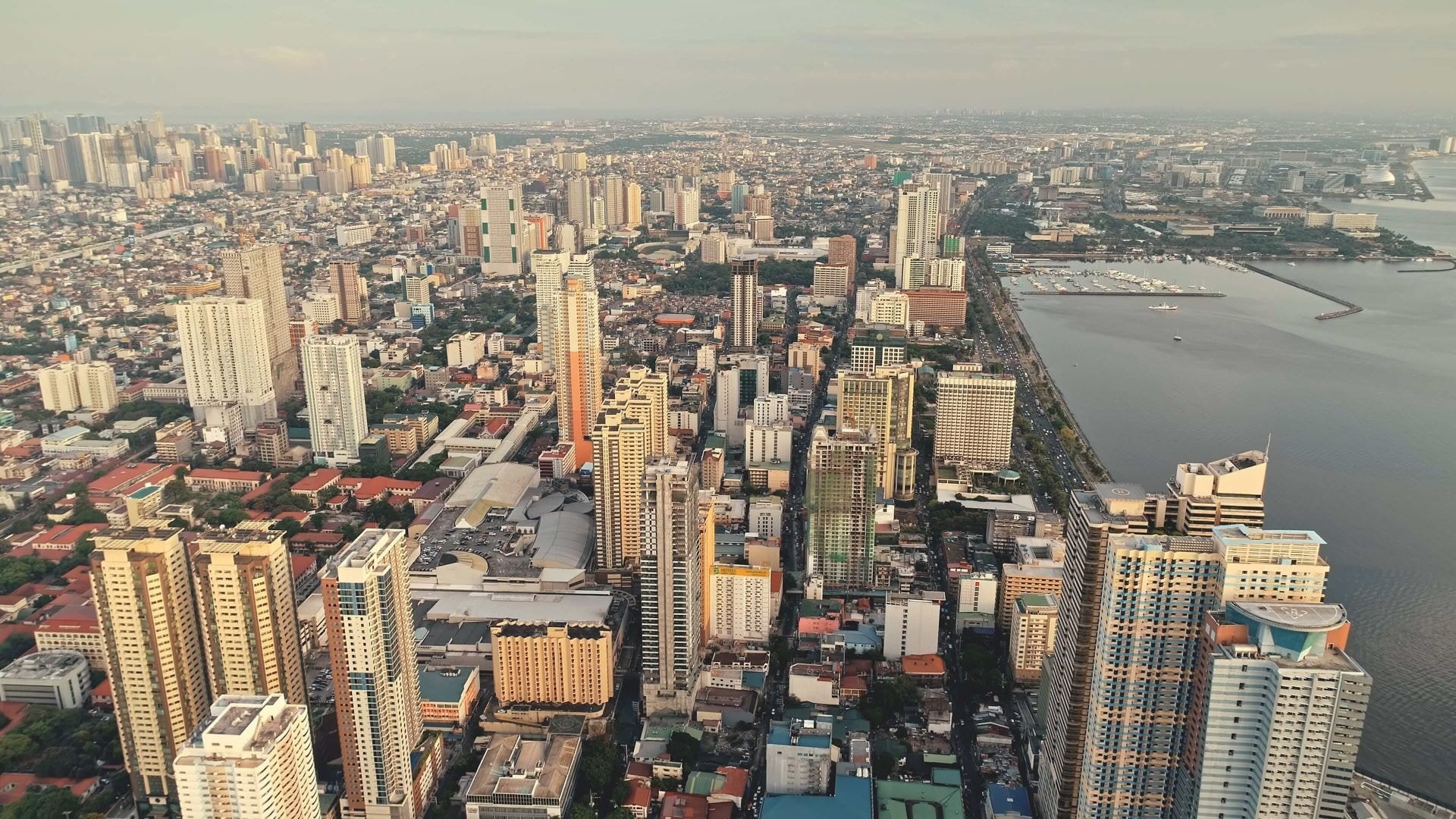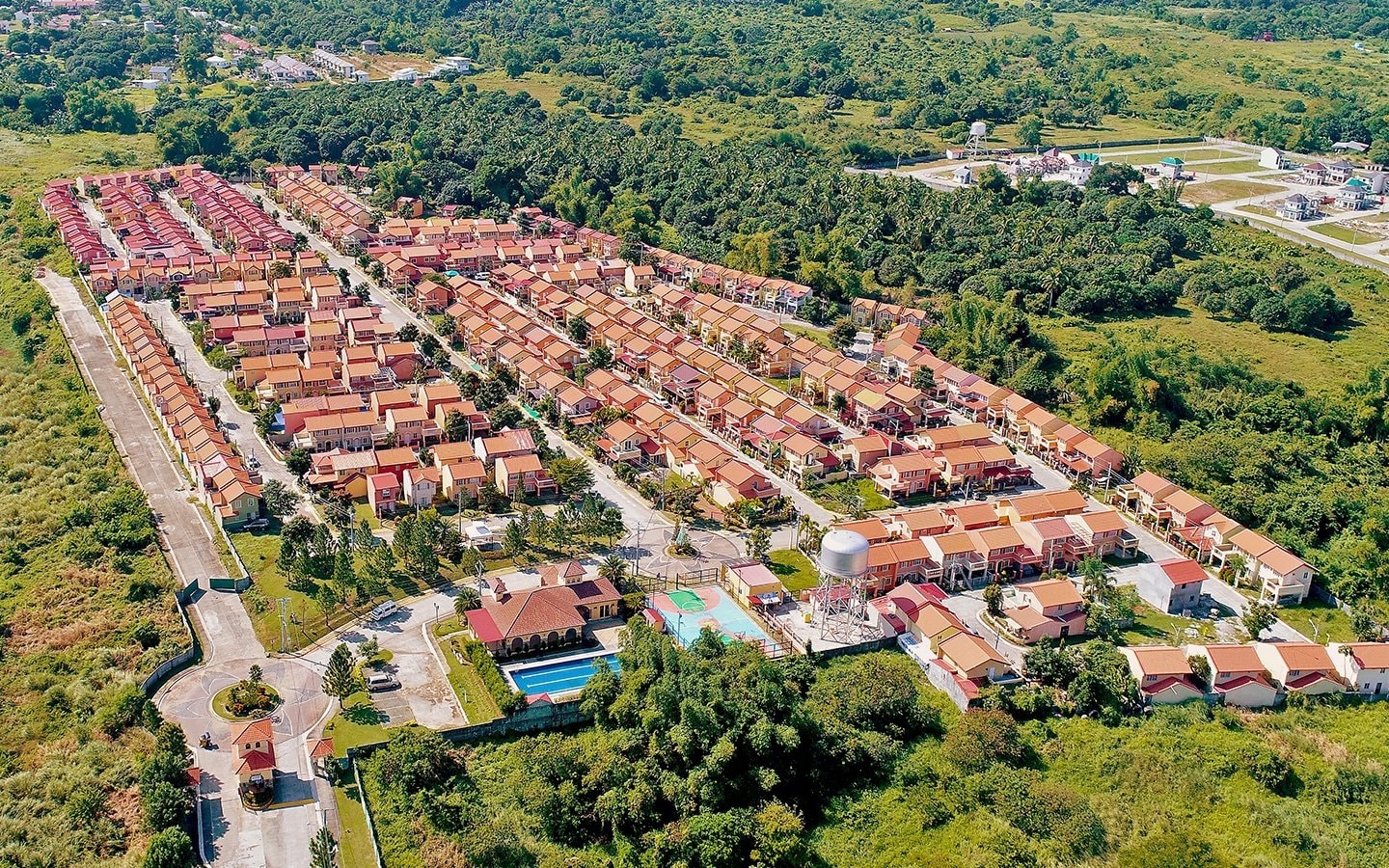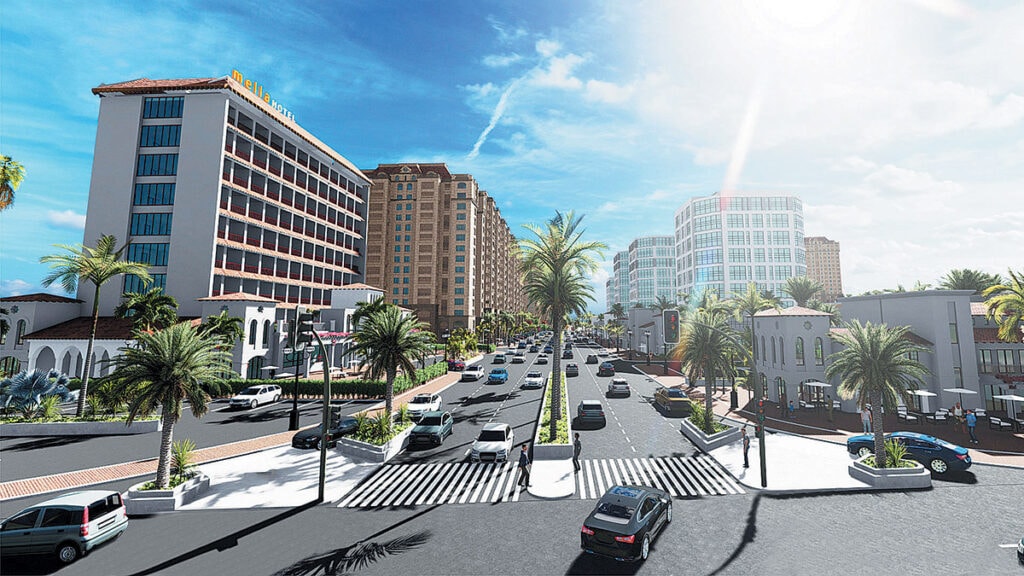Philippine Real Estate Investment Incentives: Advantage of Investing in Philippine Metropolitan Areas

The Philippine real estate market has rapidly evolved into a major driver of the country’s economy, especially in urban centers like Metro Manila and other major cities.
With continued economic growth, support from the Philippine government, and active participation from the Philippine Economic Zone Authority (PEZA), investors—both local and foreign investors—are discovering the numerous advantages of investing in Philippine metropolitan areas.
From direct property ownership of residential properties to income-generating rental properties and high-yield commercial spaces, the country offers a wide range of opportunities for smart and diversified real estate investment.
The emergence of real estate investment trusts (REITs) has made the market even more accessible, offering investors a way to benefit from real estate without owning physical assets.
Thanks to rising property values, increased foreign interest, and the expansion of central business districts, investing in the Philippine real estate sector has never been more appealing. In these areas, commercial properties thrive alongside lifestyle developments, providing steady rental income for both small-scale landlords and corporate investors.
Whether you’re entering the market or growing an existing portfolio, it’s crucial to build your investment strategy on thorough market research. Understanding local market dynamics, including property taxes, supply-demand trends, and development pipelines, gives investors a competitive edge.
For those navigating this complex but rewarding landscape, it’s always advisable to seek professional advice from licensed real estate agents and financial experts.
Backed by regional economic outlooks from institutions like the Asian Development Bank, and reinforced by the continuous inflow of foreign investments, the Philippine real estate market remains a resilient and dynamic platform for building wealth.
Whether you’re looking to diversify through REITs, invest in commercial spaces, or capitalize on rental income, now is the ideal time to explore the full potential of Philippine real estate investment—especially in its ever-growing metropolitan hubs.
Understanding Real Estate Investments

Real estate investing involves the strategic purchase, ownership, management, rental, or sale of various property types—such as vacation rentals, urban area condominiums, commercial units near educational institutions, or land in special economic zones.
Unlike stocks or bonds listed on the Philippine Stock Exchange, real estate provides a tangible asset that is less susceptible to market volatility, offering a sense of stability in a dynamic economic landscape.
One of the key attractions of real estate is its ability to deliver consistent cash flow through rental income, while simultaneously benefiting from property appreciation over time. For many property investors, real estate serves as both a hedge against inflation and a path to financial success.
The added benefits of tax incentives, including tax advantages for long-term capital gains and depreciation, further enhance its appeal—particularly in government-supported areas like special economic zones near infrastructure hubs such as Clark International Airport.
In the Philippines, investment incentives provided by the government, in collaboration with institutions such as the Philippine Statistics Authority and the United Nations Conference on Trade and Development, are designed to attract both local and foreign ownership.
These incentives include relaxed zoning regulations, reduced property taxes, and fast-tracked permits in key growth corridors, offering a fertile ground for long-term property price appreciation. Understanding market trends is crucial in this space.
Through proper market research, investors can identify locations with strong growth indicators, such as proximity to infrastructure projects, commercial hubs, or high-density urban areas.
Emerging locations with access to transportation, employment centers, and lifestyle amenities are often flagged by experts as high-return areas.
Informed decisions, however, require working with professionals. Seasoned financial advisors and real estate specialists can provide valuable insights on everything from securing financing to portfolio diversification strategies.
Another increasingly popular route in Philippines investing is through real estate investment trusts (REITs), which offer the potential for dividend income without the hands-on management required in traditional property ownership. REITs also offer greater liquidity and access to commercial real estate portfolios typically unavailable to individual investors.
Whether you’re a first-time buyer or a seasoned investor, success in real estate lies in understanding the balance between opportunity and risk.
With smart planning, attention to market trends, and a clear grasp of local policies and tax regulations, real estate continues to be one of the most stable and rewarding investment choices in the Philippines.
Key Investment Types in Real Estate

Real estate investment in the Philippines is a rapidly growing field, driven by consistent economic growth, robust infrastructure development, and supportive government policies. With the expanding Philippine real estate market, more investors, both local and foreign investors, are exploring different property types to maximize returns.
Whether you’re interested in direct property ownership or prefer the flexibility of real estate investment trusts (REITs), understanding the diverse real estate options available in urban centers, especially within Philippine metropolitan areas, is essential to building a resilient investment strategy.
Residential Real Estate
This includes houses, condominiums, and apartments. With surging housing demand in major cities and central business districts like Metro Manila, Cebu, and Davao, residential properties continue to be one of the most accessible and rewarding forms of real estate investment.
The strong rental demand in these areas often results in steady rental income, rising property values, and long-term property appreciation.
According to the Philippine Statistics Authority, housing needs are expected to grow further, making this sector a favorite among both first-time buyers and experienced property investors.
Commercial Real Estate
This segment covers investments in commercial spaces such as offices, retail stores, hotels, and warehouses. With economic centers like Makati, Taguig, and Ortigas teeming with commercial properties, there is high demand driven by multinational companies, BPOs, and expanding startups.
These assets typically yield higher returns and benefit from strong market dynamics. Strategic location near infrastructure development and within special economic zones accredited by the Philippine Economic Zone Authority (PEZA) can further enhance profitability and offer additional investment incentives such as reduced property taxes.
Real Estate Investment Trusts (REITs)
For investors who prefer not to manage physical assets, real estate investment trusts offer a practical entry into the Philippine real estate market. Listed on the Philippine Stock Exchange, REITs allow individuals to earn from a diversified portfolio of real estate assets and enjoy dividend income with added liquidity.
REITs are also a safer option during times of market volatility, as they are professionally managed and regulated.
Vacation Rentals
Tourist destinations like Tagaytay, Palawan, and Boracay make vacation rentals an increasingly lucrative option. These rental properties benefit from the country’s booming tourism and improved connectivity via airports and highways.
With proper market research, investors can capitalize on seasonal demand and tourism-driven foreign investments, gaining strong rental income and significant ROI over time.
Land Development
Investing in raw land and turning it into developed spaces is a long-term strategy that continues to gain traction, especially on the outskirts of urban areas. Properties near Clark International Airport, for instance, offer exceptional growth potential due to their strategic location and inclusion in government-led infrastructure plans.
These lands can later be transformed into residential properties, commercial spaces, or mixed-use developments—often at a premium. The Asian Development Bank has also highlighted the role of sustainable land development in strengthening national and regional economies.
Breaking Down Real Estate Investment Strategies
Behind every successful real estate venture lies a well-planned investment strategy. Whether you’re a beginner or a seasoned investor, mastering these essential steps can help you navigate the complexities of the real estate market, make informed decisions, and maximize your returns.
From analyzing market trends to managing rental properties, here’s how to build a winning approach.
1. Start Smart: Conduct Market Research and Analysis
Every strong investment begins with thorough market research. By studying local property trends, supply and demand, and economic indicators, investors can pinpoint high-growth areas and emerging hotspots in both urban centers and upcoming districts.
Keeping track of infrastructure developments and regional progress helps in identifying locations with strong potential for property appreciation.
2. Plan Ahead: Financial Planning and Budgeting
Real estate requires more than just capital—it demands sound financial planning. Create a detailed budget that accounts for property prices, acquisition costs, property taxes, renovations, legal fees, and maintenance expenses.
Also consider financing options, such as bank loans or in-house financing, to help you secure financing without overextending.
3. Choose Wisely: Property Selection and Due Diligence
Not all properties are created equal. Before purchasing, conduct due diligence by verifying land titles, zoning permits, the developer’s track record, and the property’s legal standing.
This step minimizes the risk of legal complications and ensures that you’re making a smart, secure investment.
4. Earn Consistently: Rental Income and Property Management
Owning rental properties can generate stable, long-term rental income—but only with proper management.
Whether you hire real estate agents, property managers, or manage it yourself, handling tenant relations, maintenance, and rent collection efficiently is key to sustaining profitability.
5. Stay Agile: Monitor Market Trends and Adaptability
The real estate market is dynamic. Investors must stay up-to-date with market trends, shifts in consumer preferences, technology (like smart and sustainable homes), and changes in government regulations.
Adapting your strategy to evolving market dynamics helps maintain your investment’s relevance and value.
6. Think Long-Term: Exit Strategies and Portfolio Diversification
A smart investor always plans an exit. Whether it’s reselling the property at a higher value, converting it into a vacation rental, or reinvesting in new property types, an exit strategy offers flexibility.
Additionally, portfolio diversification across residential properties, commercial spaces, and even vacation rentals helps minimize risk while maximizing potential returns.
Why the Philippines is a Smart Investment Choice
As Southeast Asia’s rising star, the Philippine real estate market offers a wealth of opportunities for both local and foreign investors. Backed by strong fundamentals and government-backed programs, investing in Philippine properties—particularly in metropolitan areas—presents a strategic way to build long-term wealth.
Here’s a closer look at what makes the country such a promising destination for real estate investment.
Economic Growth: A Foundation for Real Estate Expansion
The country’s economic growth remains robust, thanks to steady GDP performance fueled by overseas Filipino workers’ (OFW) remittances, local consumption, a young labor force, and a thriving service sector.
Urban hubs like Metro Manila, Metro Cebu, and Davao City are driving this upward momentum, turning them into high-demand areas for residential and commercial properties. These cities are magnets for career-driven individuals, corporations, and educational institutions, further boosting property values and investment appeal.
Infrastructure Development: Enhancing Accessibility and Property Potential
Under the Philippine government’s flagship Build, Build, Build program, massive infrastructure initiatives—ranging from new expressways to modernized airports and railway networks—are transforming the nation’s urban centers.
Projects like the North-South Commuter Railway, Metro Manila Subway, and the expanded Clark International Airport are unlocking property potential in both established cities and developing areas. Investors who position early in these zones stand to benefit from rapid property appreciation.
Philippine Economic Zone Authority (PEZA): Incentives for Strategic Investments
The Philippine Economic Zone Authority (PEZA) plays a critical role in attracting foreign and local investments by offering tax incentives and business-friendly policies within special economic zones.
Properties near PEZA-accredited areas, including IT parks, logistics hubs, and central business districts, see sustained demand from multinational firms and BPO companies. This makes them especially attractive for property investors targeting the rental income and corporate leasing market.
The Powerhouse of Metro Manila: Still Abundant with Opportunity
As the economic, political, and cultural heart of the country, Metro Manila offers a dynamic environment rich with real estate investment potential. From luxury condominiums in Bonifacio Global City to affordable housing in nearby provinces, the region continues to attract diverse buyers.
The expansion of its outskirts—such as Bulacan, Cavite, Laguna, and Rizal—creates new options for those seeking more affordable but still accessible properties. These growth corridors provide a balance of livability, convenience, and long-term investment gain.
About Foreign Investors and Foreign Ownership
The Philippine Constitution restricts foreign ownership of land but allows foreigners to own condominium units, provided that foreign ownership in a building does not exceed 40%.
This opens investment avenues for foreigners who want to participate in the real estate market, particularly in vertical developments.
Additionally, foreigners can lease land for up to 50 years, renewable for another 25 years. With proper legal advice and strategic partnerships with local developers, foreign investors can successfully navigate these restrictions.
Invest with Vista Land’s Quality Properties

In the dynamic landscape of Philippine real estate, Vista Land & Lifescapes stands out as a premier integrated property developer. With a proven track record and a diverse portfolio, Vista Land offers investors a range of opportunities that combine strategic location, thoughtful design, and long-term value.
A Legacy of Excellence in Real Estate Development
Established in 2007, Vista Land has grown to become one of the Philippines’ largest homebuilders, having constructed over 500,000 homes across 47 provinces and 149 cities and municipalities.
The company’s commitment to building master-planned communities ensures that each development is not just a residence but a holistic living experience.
Diverse Portfolio Catering to Various Market Segments
Vista Land’s array of brands caters to a wide spectrum of investors and homeowners:
- Camella: Offers affordable yet quality homes, making homeownership accessible to many Filipinos.
- Crown Asia: Provides themed residential properties and condominiums in strategic locations, targeting the upscale market segment.
- Vista Land’s High-Rise Developments: Focuses on vertical communities that align with modern urban lifestyles.
- Vista Manors: Delivers resort-themed vertical villages across key regions, offering serene living
- Lumina Homes: Caters to the value-conscious market with affordable housing options in accessible locations.
This diverse portfolio ensures that investors can find properties that align with their investment goals and target markets.
Strategic Locations and Master-Planned Developments
Vista Land’s developments are strategically located in growth areas, benefiting from infrastructure developments and economic expansion. The company’s master-planned communities integrate residential, commercial, and lifestyle components, providing residents with a comprehensive living experience.
Notable projects include Vista Estates, which encompass horizontal and vertical residences, commercial spaces, and lifestyle options within expansive land assets.
Commitment to Sustainable and Innovative Living
Vista Land is dedicated to creating communities that promote sustainability and innovation. By incorporating green spaces, modern amenities, and sustainable practices, the company ensures that its developments meet the evolving needs of residents and investors alike.
This commitment not only enhances the quality of life for residents but also contributes to the long-term value and appreciation of the properties.
Trusted Platform for Wealth Creation
Whether you’re an Overseas Filipino Worker (OFW), a first-time investor, or looking to diversify your portfolio, Vista Land provides a trusted platform for real estate investment.
With its extensive experience, diverse offerings, and strategic developments, investing with Vista Land positions you to capitalize on the growth of the Philippine real estate market.
Unlocking the Wealth Potential in Philippine Real Estate
Investing in Philippine real estate—especially in metropolitan areas—presents a wealth of investment opportunities characterized by security, capital gains, and sustained profitability.
The country’s strategic location, coupled with a growing population density in bustling cities like Metro Manila, Cebu, and Davao, creates a dynamic environment where emerging trends in real estate are rapidly shaping the future landscape.
Government initiatives aimed at improving infrastructure, such as enhanced public utility vehicles and mixed-use developments, further boost the appeal of the real estate market.
These developments combine office buildings, retail spaces, and residential properties, creating vibrant urban centers that cater to the diverse needs of both residents and businesses. Such projects not only preserve the rich cultural heritage and natural beauty of the Philippines but also modernize its cities to attract both local and foreign investors.
The continuous growth of the Philippine economy provides a solid foundation for capital gains in real estate, fueled by urbanization and increasing consumer demand. These factors, alongside a broader range of property types and the expansion of mixed-use developments, offer investors multiple avenues to diversify their portfolios.
However, success in this thriving market requires thorough market research and professional advice. Gaining valuable insights from experts ensures informed decisions that align with your investment strategy and risk appetite. Whether you are investing in office buildings, retail spaces, or residential communities, understanding market dynamics is crucial.
As the real estate sector evolves with emerging trends and government support, now is the perfect time to capitalize on the momentum.
Whether building your investment portfolio, planning for retirement, or securing your family’s financial future, Philippine real estate remains a promising gateway to long-term financial success.

